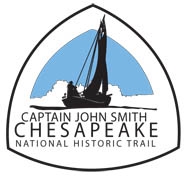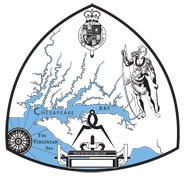CJS - First Landing State Park Traditional Geocache
CJS - First Landing State Park
-
Difficulty:
-

-
Terrain:
-

Size:  (regular)
(regular)
Please note Use of geocaching.com services is subject to the terms and conditions
in our disclaimer.


Come on a journey to remember and commemorate the history and travels of Captain John Smith
Over four hundred years ago, Englishman John Smith and a small crew set out in an open boat to explore the Chesapeake Bay. Between 1607 and 1609 Smith mapped and documented nearly 3,000 miles of the Bay and its rivers. Along the way he visited many thriving American Indians communities and gathered information about this “fruitful and delightsome land.” In December 2006 the U.S. Congress designated the routes of Smith’s explorations of the Chesapeake as a national historic trail—the first national water trail.Are you ready to follow in the wake of Captain John Smith? Visit sites along the National Historic Trail and learn about the native cultures and the natural environment of the 17th-century Chesapeake through the Captain John Smith Chesapeake Geotrail. The Trail provides opportunities for you to experience the Bay through the routes and places associated with Smith’s explorations. Caches will be located in museums, refuges, parks, and towns in Virginia, Maryland and Delaware along the rivers and creeks that Smith and his crew explored four centuries ago.
The Captain John Smith (CJS) Geotrail launched June 4, 2011 with over 40 caches within Maryland, Virginia and Delaware. A trackable geo coin will be awarded to the first 400 geocachers, while supplies last, for locating at least 15 CJS caches. To be eligible for the coin, geocachers must download a passport from either the CJS Geotrail or Maryland Geocaching Society website. Geocachers must find and log at least 15 finds, record the code word from each cache on their passport and post a picture of themselve at each cache location. After discovering the 15 required caches, geocachers may have thier passports validated in person or via mail at the National Park Service, Chesapeake Bay Office located at 410 Severn Ave, Suite 314, Annapolis, MD 21403. Please refer to the passport for complete validation instructions.
Participating in the CJS geotrail is fun and we hope that many people join in. However, it is not a requirement for logging your find on this cache once you find the container.
You are seeking a traditional hide. The cache is a Lock & Lock stocked with a variety of items. The park does charge an entrance fee. Please refer to the parks website for updated information. Please enter the trail head off of the Cape Henry Trail here: N36 54.312 W76 00.555.

Built by the Civilian Conservation Corps in the 1930s, First Landing State Park is located near the mouth of Chesapeake Bay in Virginia Beach. It is Virginia's most popular state park, attracting over a million visitors each year to its beaches and trails. First Landing offers boating, swimming, nature and history programs, hiking, biking, picnicking, a boat launch, cabins, and 20 miles of trails on 2,888 acres. It also has shaded campsites with water and electric hook-ups and nearby access to restrooms and showers. A new visitor and education center introduces visitors to the Virginia Indian way of life, the first settlers and the native landscape.
First Landing is located close to the spot where English colonists arrived in 1607 on their way to establishing the first permanent English settlement at Jamestown. The park's name was changed in 1997 from Seashore State Park to First Landing State Park to reflect its heritage as the place where members of the Virginia Company initially landed.
There were most likely people here before the English arrived, but it was strangely empty when they landed. Archeologists and historians now believe that First Landing fell within the territory of the Chesepiock, or Chesepian, tribe, after whom the great bay was named by Sir Walter Raleigh. The tribe was destroyed or wiped out by Powhatan, leader of a 30-plus tribe paramount chieftaincy covering most of the peninsula. Shortly before the arrival of the colonists, “his priests told him how that from the Chesapeack[sic] Bay a nation should arise which should dissolve and give end to his empire, for which… he destroyed and put to sword all such who might lye under any doubtful coustruccion of the said prophesie, as all the inhabitants, the weroance and his subjects of that province, and so remaine all the Chessiopeians at this daye, and for this cause, extinct” (William Strachey. The Historie of Travaile into Virginia Britannia [ca. 1618], 101).
Interpretive panels in the park’s Chesapeake Bay Center address interaction between Powhatan Indians and the English, as well as Powhatan lifestyles at contact. Across the road from the Center, pre-colonial Powhatan style structures, including a home, a sweat lodge and a temple, have been created with assistance from Nansemond tribal members and academic experts. The site is part of a half-mile paved walking and biking trail incorporated into the 6-mile Cape Henry Trail.
 Thanks to Mini Martin Warriors for helping with this hide and to the Maryland Geocaching Society for assisting with this project!
Thanks to Mini Martin Warriors for helping with this hide and to the Maryland Geocaching Society for assisting with this project!
Additional Hints
(No hints available.)